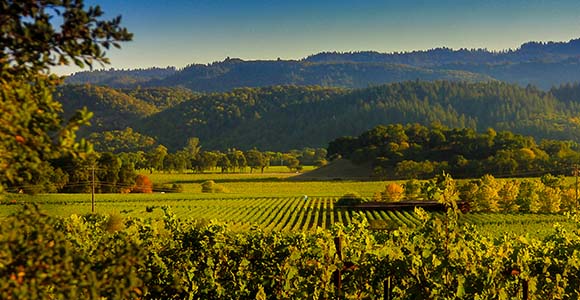
(Photo Credit: James Daisa/Flickr)
California’s working landscapes include farmland, ranches, forests, wetlands, mines, water bodies and other natural resource lands, both private and public. From clean water and nutritious food to climate stability and outdoor recreation, they provide essential benefits for our economy, health and quality of life. These ecosystem services are often taken for granted, leading to underinvestment in the natural systems and rural communities that sustain them.
A new report — Ecosystem Services and Working Landscapes: Market Mechanisms to Revitalize Rural Economies, prepared by Daniel O’Connell, Ph.D., and Adam Livingston, with support from the University of California Division of Agriculture and Natural Resources — offers a framework for mapping, valuing and investing in ecosystem services. To ensure that those who manage California’s working landscapes benefit from stewarding them, the report recommends that policymakers do the following:
Create and Expand Markets for Ecosystem Services
- Use Enhanced Infrastructure Financing Districts (EIFDs) or Similar Mechanisms to Create Local or Regional Markets for Natural Water Infrastructure: Incorporate the costs of conserving natural capital, such as upper watershed forests or riparian corridors, into water fees paid by end users who benefit from that capital.
- Expand Existing Markets for Farmland and Rangeland Conservation: Fund and strengthen markets that support agricultural conservation, such as those created by the Farm Bill, the Williamson Act and the Sustainable Agricultural Lands Conservation Program (SALCP). Recently proposed legislation, for example, would fund subvention payments to counties to offset property tax revenue lost to Williamson Act contracts (SB 435), and provide for contract terms of up to fifty years (AB 925).
- Expand the Market for Habitat Conservation: Build on Habitat Conservation Plans, Natural Community Conservation Plans, and partnerships like the Central Valley Habitat Exchange to expand investments in habitat conservation.
- Expand the Market for Carbon Sequestration: Building on California’s pioneering cap-and-trade program and the greenhouse gas reduction goals set by SB 32, expand existing investments in carbon sequestration, and fully fund the Healthy Soils Program.
- Expand and Integrate Markets for Agricultural Practices that Provide Multiple Ecosystem Services: Building on federal investments, such as WHIP and EQIP, and state programs, such as the Healthy Soils Program and the State Water Efficiency and Enhancement Program (SWEEP), provide coordinated funding for agricultural practices that reduce GHG emissions, contribute to water availability and support biodiversity.
Support Participation
- Provide Regulatory Incentives to Support Market Participation: Create a regulatory framework that increases demand for specific bundles of ecosystem services, reduces barriers to participation and helps link buyers to sellers.
- Design Programs to Be Responsive to Participants’ Needs: Ensure that stakeholders are vested in ecosystem services markets by incorporating citizen science, traditional ecological knowledge, rural needs, and participatory budgeting into program design. Ongoing input can help refine programs over time.
- Provide Technical Assistance: From applying for funding to implementing land management practices, ensure that technical assistance is available to help farmers, ranchers and other landowners participate in ecosystem services markets.
Enhance Mapping Capabilities
- Support Mapping Technology Integration: Provide funding and technical support to integrate the Sacramento Area Council of Governments’ Rural-Urban Connections Strategy (RUCS) and other tools into an open source, statewide system for mapping ecosystem services.
For more on these proposals, please read the full report, available here, and join O’Connell and Livingston for a lightning talk and breakout session at the 2017 California Economic Summit in San Diego.
Registration and program information for the statewide Summit, happening on November 2-3, can be found on the Summit registration page.
Stephanie Larson is director of University of California Cooperative Extension, Sonoma County; Adam Livingston is director of planning and policy at the Sequoia Riverlands Trust; and Daniel O'Connell, Ph.D. is executive director of the Central Valley Partnership and field director of the Community Governance Partnership

